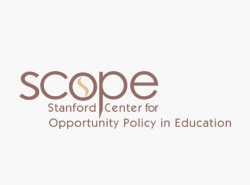Call to action: Engage and motivate students
In a discussion on how to motivate students, Bob Lenz cites SCOPE's Student-Centered Schools study as an example of students who are engaged.
In a discussion on how to motivate students, Bob Lenz cites SCOPE's Student-Centered Schools study as an example of students who are engaged.
A cross-case analysis, a technical report, an educators' tool, and a research and policy brief offer evidence of the positive impact of student-centered learning.
Video, documents, and other resources from the June 11, 2014, SCOPE conference, "Rethinking Accountability: Putting Students and Learning First"
Dorothy Steele and Becki Cohn-Vargas discuss the negative effects of trying to be "colorblind," and how a multicultural education should be taught in schools.

Stephens, Hamedani, and Destin found that a difference-education intervention improves the college transition for all students on numerous psychosocial outcomes.

Jaquith et al. developed this guide for teachers, principals, and administrators from the Linked Learning field for developing a performance assessment system.
While, nationally, students of color and low-income students continue to achieve at far lower levels than their more advantaged peers, some schools are breaking that trend. A set of case studies looks at four of these schools in Northern California.

This brief describes how Linked Learning schools can create education programs blending real-world problems with skills to succeed in college and the workforce.

Darling-Hammond describes the kind of preparation and policy system needed to build a coherent system that can provide well-trained teachers in all communities.

Darling-Hammond and Ifill-Lynch ask, What can teachers do about students who fail to complete their assignments?